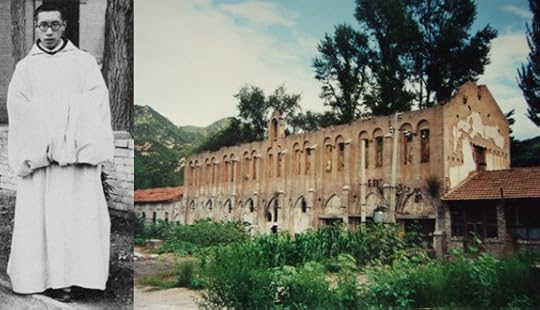China's Modern Martyrs: From Mao to Now (Part 2)

China's Modern Martyrs: From Mao to Now (Part 2) | Anthony E. Clark, Ph.D. | CWR
The little-known story of the murder of 33 Trappist monks by Chinese Communists in 1947
Editor's
note: Part 1 of “China's Modern Martyr's: From Mao to Now” was published on June 13, 2013.]
Part
2, Torments
“The
body of Christ which is the Church, like the human body, was first
young, but at the end of the world it will have an appearance of
decline.” — St. Augustine
As
I sat with Brother Marcel Zhang, OCSO (b. 1924), in his Beijing
apartment, I thumbed through his private photographs of Yangjiaping
Trappist Abbey. Some were taken before
its destruction in 1947, and some he had taken during a recent visit
to the ruins. What was once a majestic abbey church filled with
divine prayer and worship had been reduced to debris and an
occasional partial outline of a gothic window. When the People’s
Liberation Army (PLA) attacked the monastery in 1947 and began its
cruel torments against the monks, Zhang was one of the monks. He
shared with me some of his recollections, no doubt at great risk. As
we looked at a picture of the Abbey church as it appears today, where
the monks gathered for daily Mass prior to 1947, Zhang paused to
contemplate the ruins. “It’s already gone . . . already, the
church is like this,” he said, insinuating that the ruins of the
Abbey “church” metaphorically represented the “Church” in
China, still haunted by the past, still tormented in the present.
_______
After
the People’s Court had demanded the collective execution of the monks
of Our Lady of Consolation Abbey at Yangjiaping, the Trappists were
bound in heavy chains or thin wire, which cut deeply into their
wrists, and were confined to await their punishments. Brother Zhang
recalled that during the many trials, Party officials presiding over
the interrogations accused the Trappists of being, “wealthy
landlords, rich peasants who exploit poor peasants,
counterrevolutionaries, bad eggs, and rightists”. Essentially, they
were charged with all of the “crimes” commonly ascribed to the
worst classes in the Communist list of “bad elements.”
Normally, only one of these accusations was sufficient to warrant an
immediate public execution, but some of the accused from the abbey
were foreigners, and news that Nationalist forces were on their way
to save the monks alarmed the Communist officers. Punishments had to
be inflicted on the road, on what became the Via
Crucis of the Trappist
sons of Saint Benedict. More interrogations were staged during stops,
and Brother Zhang noted that new trials, or “struggle sessions”
(鬥爭)
as he called them, were orchestrated at every village. Zhang himself
was questioned more than twenty times at impromptu People’s Courts.
He remembered that he was treated with much more leniency than the
priests, as he was still only a young seminarian in 1947. The priests
were much more despised. “After the interrogations,” Zhang
recalled, “we would go out to relieve ourselves, and I saw the
buttocks of the priests, which were red [from their beatings]; the
flesh hung off like meat.”
Chinese Catholics who know about the Yangjiaping incident refer to
these torments as a “siwang
xingjun,” 死亡行軍
or
a “death march,” and this is when most of the Trappists who died
received their “palms of martyrdom.”
The
Death March: A Trappist “Way of the Cross”
Late
in the evening of August 12, 1947, the feast of St. Clare of Assisi,
one of the Communist officials who had ordered the severe beatings at
the People’s Court, Comrade Li Tuishi, gathered the wearied monks
for their march.
Carl E. Olson's Blog
- Carl E. Olson's profile
- 20 followers



